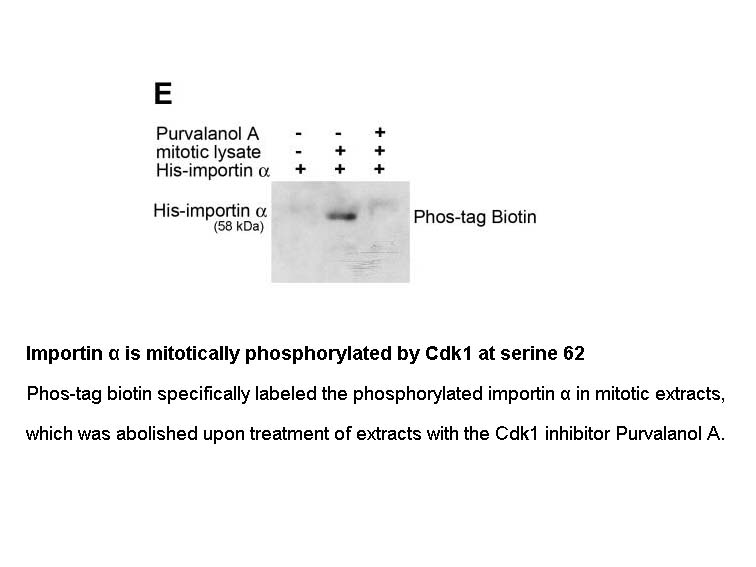Phos binding reagent (Phosbind) Biotin
Phosbind Biotin provides a sensitive method for detection of phosphorylated proteins on a PVDF membrane. This method needs streptavidin-conjugated horseradish (HRP) and chemiluminescent detection reagent.
Protein phosphorylation is an important covalent post-translational modification that can alter the structural conformation of a protein, which then regulates the function, location and specific binding of the target protein. Many cellular processes are regulated by the reversible phosphorylation of proteins and 30% of the proteins are likely to be phosphorylated at some point during their existence.
The determination of the phosphorylation state of proteins is important for defining protein kinase substrates and revealing the activation state of signal transduction pathways. Methods for determining the phosphorylation status of proteins are thus have important implications in the understanding of diverse biological and pathophysiological processes, such as signal transduction pathways, cancer and other diseases.
Phos binding reagents (Phosbind) are specific and selective phosphate-binding reagents, and exhibit preferential ionic interactions with phosphorylated ions on phosphorylated proteins or peptides at neutral pH. Phos binding reagent is a dinuclear metal (Zn2+ or Mn2+) complex.
Phosbind Biotin is a specific reagent for detection of phosphorylated proteins using Western Blot and can instead of the specific phosphorylated antibodies.
- 1. Fanqiang Meng, Fengxia Lu, et al. "Acetate and auto‐inducing peptide are independent triggers of quorum sensing inLactobacillus plantarum." Mol Microbiol. 2021 Jul;116(1):298-310. PMID: 33660340
- 2. Haijing Guo, Jen-Hsuan Wei, et al. "TPX2 activation by GM130 controls astral microtubule formation and spindle orientation." bioRxiv. March 17, 2020.
1. Highly sensitive detection of phosphorylated proteins
2. The binding specificity of Phos binding reagent Biotin is independent on amino acid and sequence context.
3. Followed by antibody reprobing and MS analysis are applicable.
4. The procedure is almost the same as that with an HRP-conjugated antibody.
1. M. J. Hubbard, P. Cohen. On target with a new mechanism for the regulation of protein phosphorylation. Trends Biochem. Sci. 18: 172 (1993).
2. B. Agnew et al. Compositions and methods for detection and isolation of phosphorylated molecules. US Patent # 7,102,005. (September 5, 2006).
| Storage | 2-10°C |
| M.Wt | 766.95 |
| Formula | C40H50N10O4S |
| Solubility | insoluble in H2O; insoluble in EtOH; ≥32.3 mg/mL in DMSO |
| Shipping Condition | Small Molecules with Blue Ice, Modified Nucleotides with Dry Ice. |
| General tips | We do not recommend long-term storage for the solution, please use it up soon. |
Related Biological Data











